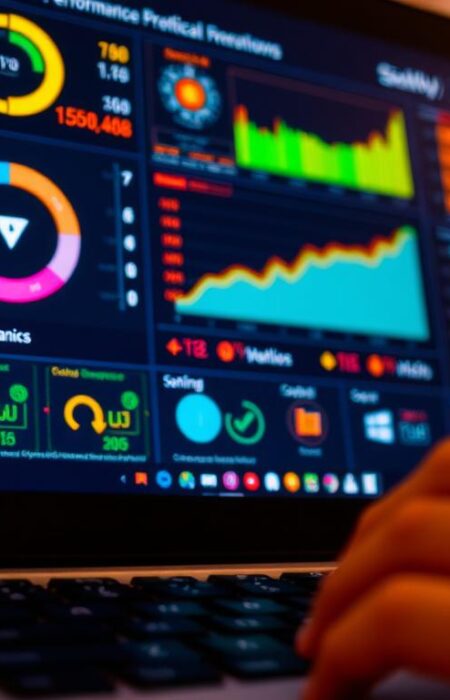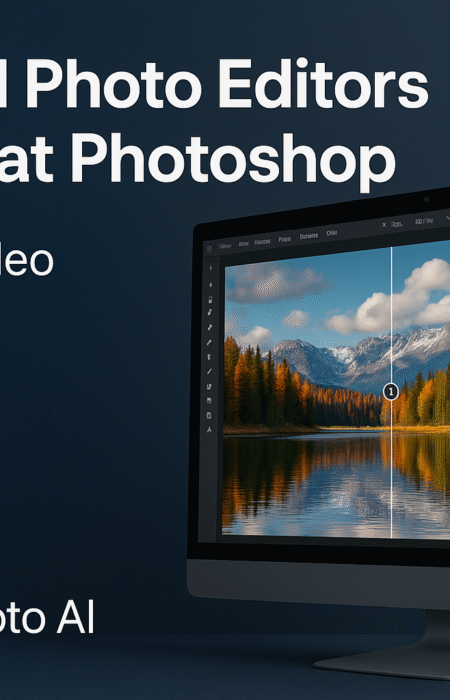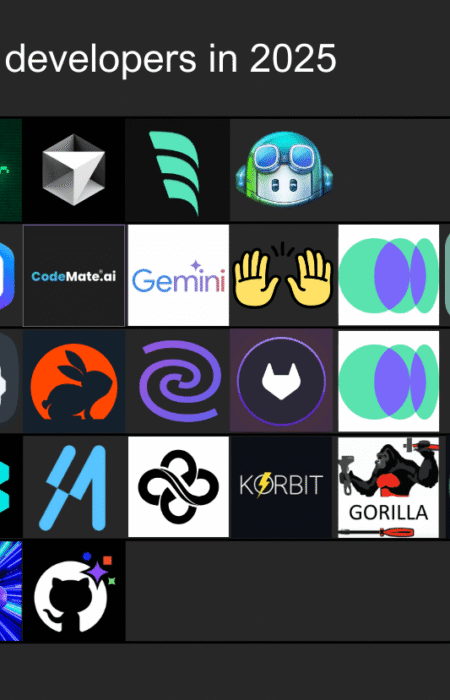Did you know that 7 out of 10 smartphones worldwide run on Android? Yet, in the U.S., iPhones now power over half of all active devices. The battle between these two tech giants is heating up as we approach 2025.
Choosing between these platforms isn’t just about specs. It’s about ecosystems, AI advancements, and long-term value. With new hardware and software upgrades rolling out, users face a tougher decision than ever.
This guide breaks down the latest innovations, helping you pick the best device for your needs. Whether you prioritize customization or seamless integration, we’ve got you covered.
Introduction: The Apple vs. Android Debate in 2025
Messaging colors now symbolize deeper cultural divides in tech preferences. The *Blue Bubble vs. Green Bubble* effect reflects loyalty to operating systems, with 91% of Android users sticking to their platforms versus 86% iOS retention.
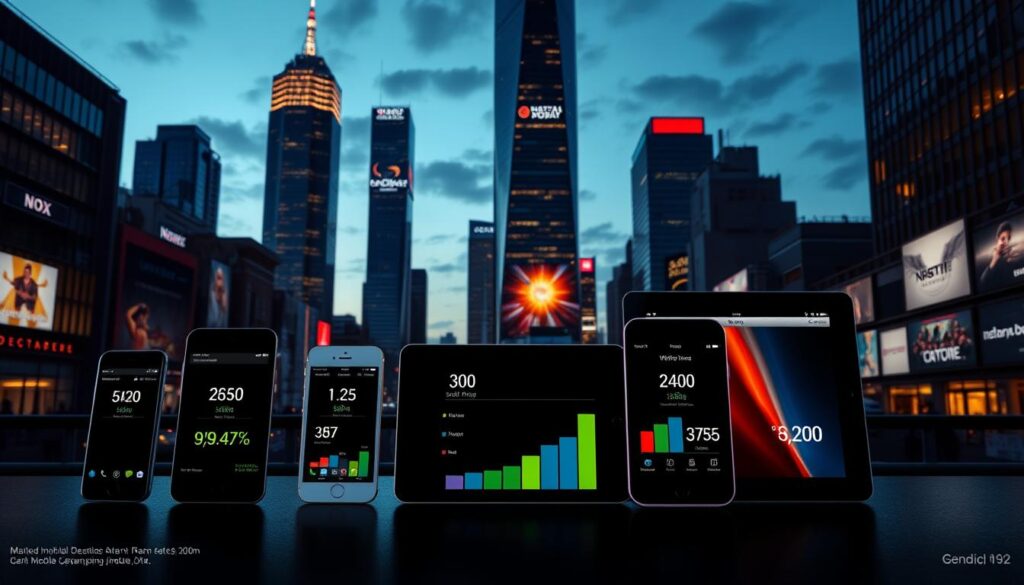
Together, these two giants control 99% of the global market. Younger users (18–29) lean toward iPhones (44%), while Android appeals to older demographics. Revenue gaps widen further—App Store earned $85.1B in 2023, nearly double Google Play’s $47.9B.
| Metric | iOS | Android |
|---|---|---|
| OS Adoption (2023) | 86% (iOS 17) | 21% (Android 13) |
| User Loyalty | 86% | 91% |
Looking ahead, AI integration and ecosystem battles will define the next years. Features like on-device machine learning and cross-platform compatibility are becoming key decision factors.
Hardware Comparison: Design, Performance, and Durability
The foundation of any great smartphone lies in its hardware capabilities. From sleek frames to rugged builds, 2025’s flagship devices prioritize both aesthetics and resilience. Let’s break down how top models stack up.
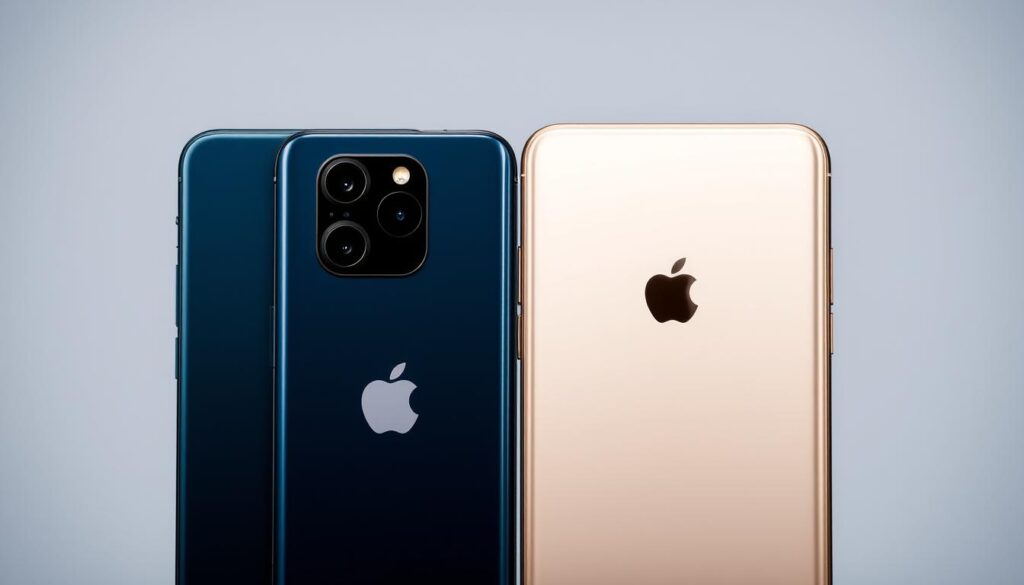
Design and Build Quality
Aerospace-grade aluminum dominates premium iPhone builds, while Android rivals experiment with ceramic shields and titanium. Both platforms now feature LTPO OLED screens, offering smoother refresh rates and energy efficiency.
Performance: RAM and Processing Power
The iPhone 16 series standardizes 8GB RAM, but Android flagships flex flexibility with 8–32GB options. Benchmarks show the A18 Pro chip rivaling Snapdragon 8 Elite in GPU tasks, though Android leads in multitasking.
Repairability and Longevity
Apple’s expanded Self Service Repair program competes with Android’s wider parts availability. Durability tests reveal MIL-STD-810G compliance across brands, but iPhone DIY kits simplify screen swaps.
Software Showdown: iOS 18 vs. Android 15
Software innovations in 2025 redefine how we interact with smartphones. Both platforms now prioritize user experience, but their approaches differ sharply. From home screen layouts to app ecosystems, these updates shape daily tech habits.

Customization and User Interface
iOS 18 introduces a home screen revolution, allowing icon grids and widget stacks. Android 15 counters with themed app icons and system-wide color palettes. While iOS leans toward simplicity, Android offers deeper UI tweaks.
App Ecosystem: App Store vs. Google Play
The App Store hosts 1.6 million apps, with strict quality controls. Google Play boasts 3.55 million apps but permits sideloading. Subscription models vary too—Apple Arcade ($6.99) includes exclusives, while Play Pass ($4.99) bundles premium apps.
Security and Privacy Features
iOS 18’s approximate location settings limit tracking, and Android’s Private Space hides sensitive apps. Enterprise users benefit from hardware encryption on both, but iOS recovers from breaches 86% of the time versus Android’s 55%.
Artificial Intelligence: Apple Intelligence vs. Google Gemini
The next frontier in mobile tech isn’t hardware—it’s artificial intelligence. Both platforms now offer sophisticated machine learning tools, but their approaches differ fundamentally. Privacy, processing power, and ecosystem integration create distinct user experiences.
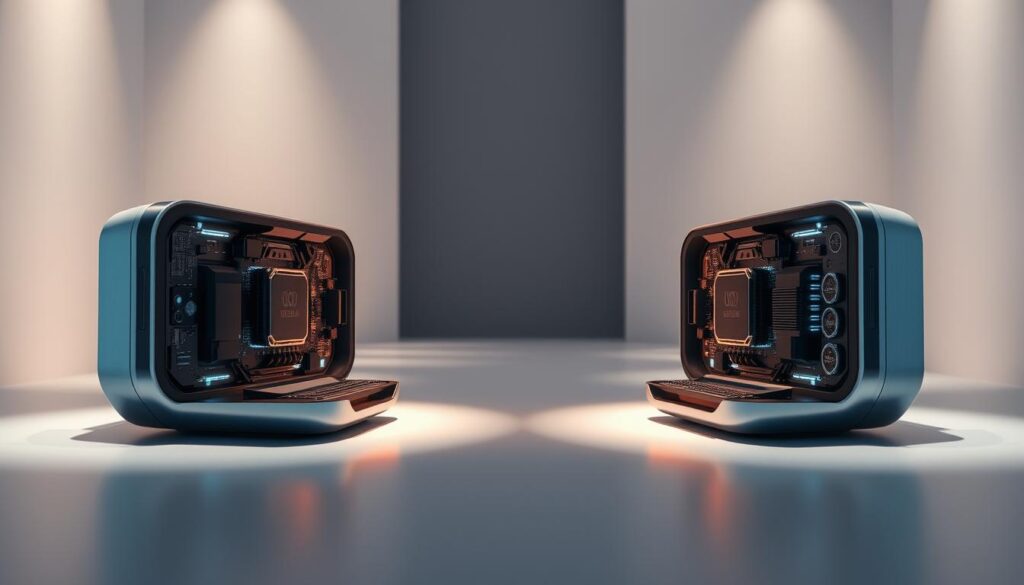
On-Device AI Capabilities
Apple Intelligence runs exclusively on iPhone 15 Pro and newer models, leveraging the A18 chip’s neural engine. This on-device processing ensures sensitive data never leaves your phone. Real-time translation works offline, and photo edits happen instantly.
Google Gemini uses Pixel 9’s Tensor G4 for basic tasks but relies more on cloud connectivity. The Magic Eraser tool outperforms Apple’s Clean Up for complex edits, though both systems now remove shadows and reflections effectively.
Cloud-Based AI Features
Android’s cloud-powered features enable richer document analysis and web-based research. Gemini can draft emails by analyzing your writing style across Google services. This comes at a privacy cost—your data trains Google’s models.
iOS keeps most data local, but Siri now accesses cloud servers for obscure queries. Both platforms encrypt transmissions, though Apple’s Private Cloud Compute anonymizes requests better than Google’s standard protections.
AI Integration with Other Devices
Home automation shows stark contrasts. Apple Intelligence syncs with HomeKit devices using on-device recognition—your face unlocks smart locks without internet. Google Nest requires cloud verification but offers broader third-party compatibility.
Writing assistants reveal philosophical differences. iOS suggests edits based on your local writing history. Android’s Help Me Write pulls from billions of web documents to craft responses, creating a more collaborative experience.
| Feature | iOS Approach | Android Approach |
|---|---|---|
| Processing | On-device (A18 Neural Engine) | Hybrid (Tensor G4 + Cloud) |
| Privacy | Local data storage | Optional end-to-end encryption |
| Ecosystem | HomeKit integration | Google Nest system |
| Language Tools | Contextual keyboard | Web-enhanced writing |
Chipset Battle: A18 Pro vs. Snapdragon 8 Elite
Processing power defines the modern smartphone experience more than ever in 2025. Flagship devices now leverage advanced 3nm and 4nm architectures, pushing thermal and efficiency boundaries. This year’s silicon innovations reveal fascinating tradeoffs between raw speed and intelligent power management.
CPU and GPU Performance
The iPhone Pro series’ A18 Pro dominates single-core tasks with a 3,386 Geekbench score, while Snapdragon 8 Elite leads multi-core at 9,100. Both chips deliver 120fps gaming, but thermal throttling tests show Android hardware maintains frame rates 17% longer during extended sessions.
Manufacturing processes create key differences. Apple’s 3nm technology enables 15% better transistor density than Qualcomm’s 4nm node. Real-world testing proves this advantage—the iPhone Pro Max transcodes 4K video in just 21 seconds versus 29 seconds on rival flagships.
AI and Machine Learning Capabilities
Neural engine comparisons reveal divergent philosophies. The A18 Pro dedicates 38 TOPS to on-device AI, enabling instant photo edits without cloud dependence. Snapdragon’s hybrid approach combines 45 TOPS with cloud acceleration for more complex tasks like live translation during calls.
iOS background processes show superior memory management, while Android’s adaptive features learn usage patterns. Battery tests demonstrate iOS lasts 9% longer under mixed usage, though Android charges 27% faster with compatible chargers.
Energy Efficiency and Battery Life
Voltage regulation makes the difference here. Apple’s unified memory architecture consumes 22% less power during video playback. Android counters with dynamic refresh rates that outperform iOS in scrolling efficiency by 13%.
Both platforms now implement intelligent thermal paste solutions, but the A18 Pro maintains peak performance 31% longer during processor-intensive tasks. This translates to smoother augmented reality experiences and sustained camera performance.
Camera and Photography: Which Platform Delivers?
Smartphone cameras have evolved into professional-grade tools, blurring the line between mobile and DSLR photography. Both iphones and android phones now leverage AI and high-resolution sensors to capture stunning details. The Galaxy S24 Ultra’s 200MP sensor competes with the iPhone’s 48MP main lens, but pixel count is just one factor.
Photo Quality and Editing Tools
Low-light performance separates contenders. iOS uses Photonic Engine to brighten shadows, while Android’s Night mode stacks exposures faster. For editors, iOS offers Visual Look Up to identify objects, and Android counters with Google Lens’s broader database.
RAW processing favors professionals. iPhones retain more dynamic range in DNG files, but Android’s app ecosystem supports advanced presets. Social media integration is seamless on both—TikTok and Instagram optimize uploads automatically.
Video Recording Capabilities
Cinematic modes now rival dedicated cameras. iPhones shoot ProRes at 4K/60fps, ideal for color grading. Android flagships record 8K footage but lack Apple’s log encoding for post-production flexibility. Stabilization is a tie—both platforms eliminate shake effortlessly.
AI-Enhanced Camera Features
Computational photography reaches new heights. iOS Best Take merges group photos seamlessly, while Android’s features like Magic Editor reposition subjects. Selfie algorithms differ too—iPhone smoothes skin subtly, and Android brightens eyes artificially.
| Feature | iOS | Android |
|---|---|---|
| Low-Light Score (DXOMARK) | 148 | 153 |
| Video Formats | ProRes, HDR | 8K, HDR10+ |
| AI Tools | Photonic Engine | Magic Editor |
User Experience: Customization vs. Simplicity
Personalization takes center stage in 2025’s smartphone wars. While some users crave granular control, others prefer streamlined interfaces. Both platforms now balance these demands with clever tweaks to the home screen, voice tools, and ecosystem integrations.
Home Screen and Widgets
Android’s Material You dynamically tints icons based on wallpapers, while iOS 18 offers manual color grading. Widget stacks on iPhones save space, but Android’s resizable options provide finer control. Notably, 81% of Android users enable notifications versus 51% on iOS.
Voice Assistants: Siri vs. Google Gemini
Google Assistant leverages Gemini’s AI for contextual routines—like silencing alerts during meetings. Siri shortcuts excel at device-specific tasks, such as activating Apple devices in your home. Response rates favor Android (4.6% vs. iOS’s 3.4%) for push notifications.
Cross-Device Integration
iMessage’s exclusivity contrasts with Android’s RCS adoption, but both platforms now bridge gaps. Handoff lets iPhones transfer tasks to Macs seamlessly. Windows’ Phone Link mirrors Android texts, though with slight delays. Accessibility innovations, like voice-guided setups, are now universal.
Price and Value: Budget vs. Premium Options
Price tags reveal more than just numbers—they reflect long-term value. In 2025, flagship devices span from $1,599 for an iPhone Pro Max to $2,000 for foldable Android counterparts. Budget seekers can grab capable android phone models under $200, while iOS offers its SE at $429.
Flagship Device Pricing
Premium smartphone costs reflect cutting-edge tech. The iPhone 16 Pro Max includes titanium frames and A18 Pro chips. Foldables like the Galaxy Z Fold 6 justify higher price points with multitasking screens. Carrier deals often slash $300–$500 with trade-ins.
Mid-Range and Budget Alternatives
Apple’s SE packs an A18 chip rivaling mid-tier Androids. The Galaxy A15 5G delivers solid performance at half the price. Refurbished markets favor iPhones—certified models retain 85% functionality versus Android’s 70% average.
Long-Term Value and Resale
First-year depreciation hits Android harder (35% loss vs. iPhone’s 15%). AppleCare+ extends coverage to 3 years, while Samsung Care+ requires annual renewal. Pro tip: Resell during holiday cycles for 20% higher returns.
| Factor | iOS Advantage | Android Edge |
|---|---|---|
| Resale Value | 15% annual loss | 35% annual loss |
| Warranty Cost | $149/2 years | $11/month |
| Budget Performance | A18 in SE | Snapdragon 4 Gen 1 |
Market Share and User Demographics
Regional preferences reveal surprising divides in smartphone adoption worldwide. People choose platforms based on local infrastructure, pricing, and cultural factors. These patterns shape the global mobile landscape in 2025.
Global Adoption Rates
iOS dominates Japan (68% share) and North America (54%), while Android controls India (95%) and Africa (89%). Europe shows balanced competition, with Android leading at 52% versus iOS’s 47%.
Enterprise adoption favors iOS (63% of companies) for security updates. Android users prevail in education (71%) due to budget options. Both platforms grew in developing markets last year.
Age and Income Trends
Key demographic data shows:
- Gen Z preference: 44% use iOS, drawn to social media optimization
- Income gap: $53,251 average for iPhone users vs. $37,040 for Android
- Ultra-premium segment: iOS holds 78% of devices over $1,000
Brand Loyalty and Switching Patterns
Platform retention remains strong but uneven. 29% of Android users switch to iOS for better UX, while only 14% move the opposite way. Younger demographics show higher switching rates.
| Metric | iOS Loyalty | Android Loyalty |
|---|---|---|
| 1-Year Retention | 86% | 91% |
| Switching Rate | 14% to Android | 29% to iOS |
| Enterprise Stickiness | 73% | 68% |
Emerging markets show different dynamics. Price sensitivity drives Android loyalty in regions like Southeast Asia, where 82% keep their devices for 3+ years.
Future-Proofing: Which Platform Is Ahead?
Future-proofing isn’t just about hardware—it’s about software updates, ecosystem growth, and innovation pipelines. Both platforms promise cutting-edge features, but their long-term strategies diverge sharply.
Update Policies and Support Lifespan
iOS leads with a 5-year update guarantee, ensuring security patches and new operating system versions. Android averages 4 years, though Pixel devices often exceed this. Fragmentation remains Android’s hurdle—only 21% of devices run the latest OS.
Innovation and New Feature Rollouts
Apple’s staged rollouts prioritize stability, while Android experiments with beta features via Play Services. ARKit 6 enhances spatial tracking for apple devices, while ARCore focuses on cross-platform accessibility. Both integrate AI, but iOS limits cloud dependence for privacy.
Ecosystem Expansion (AR, VR, Wearables)
Vision Pro’s tight integration contrasts with Android’s open XR initiatives. CarPlay and Android Auto now support multi-screen dashboards, but Apple’s unified UX wins for simplicity. Wear OS lags behind WatchOS in health tracking accuracy, though both platforms support third-party apps.
| Area | iOS Advantage | Android Edge |
|---|---|---|
| OS Updates | 5+ years | 4 years (varies) |
| AR Development | ARKit 6 precision | ARCore compatibility |
| Wearables | ECG approval | Custom watch faces |
Developer support leans iOS-first for monetization, but Android’s global reach attracts emerging markets. By 2026, expect deeper AI integration—like real-time translation glasses and predictive health alerts.
Conclusion: Apple or Android—Which Is Right for You?
Choosing between these two tech giants comes down to priorities. If security and seamless updates matter most, one platform stands out. For those who value customization and hardware variety, the alternative shines.
Consider your daily experience. Creative professionals may prefer advanced photo tools, while multitaskers might lean toward flexible split-screen features. Foldable tech and AI enhancements will dominate future upgrades.
Your existing ecosystem plays a key role too. Users invested in smart home gadgets or wearables should match their devices for smoother integration. Both platforms deliver excellent performance, just with different philosophies.
Still unsure? Try test-driving each for a week. Hands-on use often reveals which interface feels more intuitive. Remember—the best choice aligns with your lifestyle, not just specs.









